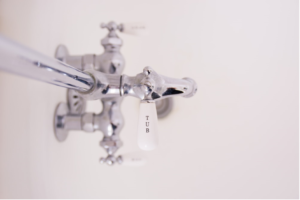Hidden water leaks in your bathroom can waste significant amounts of water. Water leaks are expensive and can cause extensive damage, and mold issues, especially if not checked early. Water leaks in the bathroom can damage bathroom walls and floors. It also increases your water bill. Below are telltale signs that suggest your bathroom might be leaking.
1. Mold or Mildew Growth
Mold and mildew thrive in warm, dark, and humid areas. Plumbing pipes connecting the bathroom are typically hidden behind the walls or under the floor. This is a perfect breeding ground for mold. At first, you may start experiencing signs of mold presence, such as irritated eyes and allergic reactions; chances are your bathroom is leaking.
You should contact a mold testing company if you see black growth on your bathroom walls and surfaces. Note that it is normal for small colonies of mold to grow in areas with water. However, extensive mold and mildew growth is a sign of water leakage.
2. Musty Smell
You should suspect water leakage in your bathroom if it has a musty or earthy smell, even after cleaning. You shouldn’t ignore this, especially if the smell comes from under the sink or other hidden areas. Most people mask the smell with air fresheners, which isn’t a good idea. You should inspect your bathroom extensively for hidden leaks, which might occur inside the cabinets or behind the faucet.
3. Damaged Walls, Paint, or Wallpaper
Wall damage is a visible sign of leaks and water damage in your bathroom. If the drywall is exposed to a lot of moisture, it becomes soft and starts bubbling. Over time, it warps, deteriorates, and breaks into pieces. Unfortunately, you should tear down the drywall to fix such leaks. You should also patch and paint the drywall after fixing the leak.
Blistering paint and water stains on bathroom wallpaper and floorboard also indicate early signs of water leaks in your bathroom. Most floorboards are sponge-like and can expand or warp quickly if exposed to water. Ideally, hot shower steam shouldn’t affect your wallpaper and paint. However, continuous water exposure can weaken its stickiness.
4. Damage Inside the Sink Cabinet
Water leaks in the bathroom are very common and often start under the sink. Unfortunately, most people don’t pay close attention to the area under their sinks and bathroom cabinets. As such, small leaks from faucets and water lines can go on for long before being noticed. You might only start noticing them if the damage to wooden cabinets becomes visible, there is progressive mold growth or a musty smell.
5. Damage to the Bathroom Floor
Damage to the bathroom floor can occur because of several reasons, including poor installation. However, if you start noticing discolored patterns on your bathroom floor or grout or loosening tiles, you should take a closer look. In most cases, loose toilet seals allow water to seep from the tank to the toilet base and floor nearby. Removing the toilet and replacing the seal should stop the leak.
Endnote
Leaks from the toilet, shower heads, and faucets are very visible. However, hidden leaks are dangerous because it takes longer to detect. By the time hidden leaks are uncovered, you’ll have lost millions of gallons and incurred extensive damage. You should contact an emergency plumber immediately if you notice water leaks in your bathroom.

